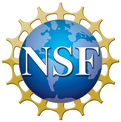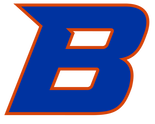About
Environ is a computational library aimed at introducing environment effects into atomistic first-principles simulations, in particular for applications in surface science and materials design.
A hierarchical, multi-scale, strategy is at the base of the different methods implemented: while the atomistic and electronic details of the system of interest are fully preserved, the degrees of freedom of the surrounding environment (being it a liquid solution of a more complex embedding) are treated using simplified approaches. By reducing the number of degrees of freedom and by exploiting intrinsic or faster statistical averaging, the implemented methods allow the systematic un-expensive study of large systems.
A hierarchical, multi-scale, strategy is at the base of the different methods implemented: while the atomistic and electronic details of the system of interest are fully preserved, the degrees of freedom of the surrounding environment (being it a liquid solution of a more complex embedding) are treated using simplified approaches. By reducing the number of degrees of freedom and by exploiting intrinsic or faster statistical averaging, the implemented methods allow the systematic un-expensive study of large systems.
Environ features the following approaches:
- Electrostatic effects of solvation. By exploiting a revised version of the continuum dielectric solvation model proposed by Fattebert and Gygi (2002,2003), Environ allows to model the main electrostatic effects of a liquid solution on a solute, being it an isolated molecule or an incommensurate, linear or planar, system. The continuum dielectric approach, which is already a staple of quantum-chemistry calculations, is here extended to periodic and partially periodic (Andreussi 2014), possibly metallic, systems and to perform molecular dynamics simulations. Moreover, the method is easily tunable, it requires minimal parametrization, while keeping an accuracy comparable or superior to more wide-spread approaches (Andreussi 2012).
- Cavitation and pressure effects. By exploiting the definitions of quantum-volume (Cococcioni 2005) and quantum-surface (Scherlis 2006) of a system in terms of isosurfaces of its electronic density, two complex embedding effects are included in Environ. These features allow to model the presence of an external isotropic pressure or of a surface tension -cavitation- in the system.
- Electrostatic effects due to periodic-boundary conditions. A few of the most common approaches to remove artifacts due to periodic boundary conditions in aperiodic or partially periodic systems have been implemented in the Environ library. In particular, the Makov-Payne, Martyna-Tuckerman, and Point-Countercharge correction schemes have been implemented for systems in vacuum and in combination with the continuum dielectric environment (Andreussi 2014).
- Electrified interfaces and electrolyte solutions. Environ includes a hierarchy of approaches to handle charged solutes and charged interfaces in electrolyte solutions (Nattino et al JCP 2019, Hormann et al JCP 2019). A simple layer of counter-charges can be introduced in the simulations cell (Helmholtz layer), a linearized Poisson-Boltzmann problem can be solved iteratively (Fisicaro et al 2016), a planar-averaged Gouy-Chapman-Stern correction can included in the system (Nattino et al JCP 2019), or a full Poisson-Boltzmann problem can be solved using a Newton-like algorithm (Nattino et al JCP 2019).
- Confining potential. Environ can be used to artificially constrain molecules or electrons in regions of the simulation cell. This can help in converging the electronic structure of anions, which is known to be ill defined in standard plane-wave DFT simulations (Nattino et al JCTC 2019). But the same embedding can also be used to constraint explicit solvent molecules to be in contact with a substrate during optimization or molecular dynamics simulations.
One common feature of the above approaches is the fact that the interface between the first-principles and the environment parts of the system are defined self-consistently in terms of the electronic density of the embedded system. An optimally smooth connection (Andreussi 2012) is used to ensure convergence of the calculations. An alternative definition of a smooth interface in terms of atomic positions (so called soft-spheres) is also implemented in Environ and shows similar accuracy as the self-consistent one, but it allows to extend applications to classical systems and as a post-processing tool. For both types of interfaces we have developed a non-local correction scheme that overcome one of the typical limitations of continuum solvation boundaries, i.e. the presence of spurious pockets of continuum medium inside the solvated system. This solvent-aware (Andreussi JCTC 2019) can be tuned with a single parameter and allows to handle complex systems with open structures (e.g. semiconductors) or hybrid continuum-explicit simulations with multiple solvent molecules in a seamless and fully differentiable way.
Each contribution can be used per se, to characterize individual environment effects corresponding to specific conditions: a cluster under the influence of a well defined external pressure, the effect of dielectric screening on the electronic properties of a substrate, etc. Moreover, the combination of different contributions can be used to give a more complete characterization of a complex environment, such as a liquid solution. This strategy is at the core of the Self-Consistent Continuum Solvation (SCCS) and of the Soft-Sphere Continuum Solvation (SSCS) approaches recently proposed to model solvation effects in aqueous solutions, by including a combination of electrostatic (continuum dielectric) and non-electrostatic (dispersion-repulsion) effects by means of a parameterized combination of the different approaches of Environ. Results on solvation free energies of neutral (Andreussi 2012, Fisicaro 2017) and charged (Dupont 2014) organic molecules showed a remarkable agreement with experiments, in particular for all those compounds that do not form stable coordination compounds with water molecules and, therefore, for which a continuum description of the environment is reasonable.
SCCS and SSCS can be used to run geometry optimizations of isolated, partially periodic and periodic systems in continuum embedding, but also to run Born-Oppeneimer molecular dynamics simulations, Car-Parrinello molecular dynamics, searches of reaction paths (through the NEB approach), for the calculation of optical spectra (exploiting the TDDFpT approach, Timrov 2015), and for the calculation of core-level spectroscopies (using the XSpectra framework, Nattino 2020).







